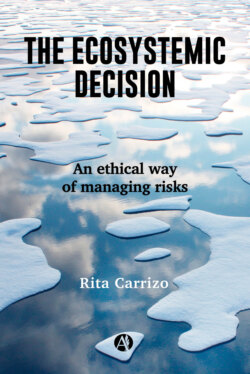Читать книгу The Ecosystemic Decision - Rita Carrizo - Страница 13
На сайте Литреса книга снята с продажи.
What does it mean to think systemically?
ОглавлениеP. Senge begins the Fifth Discipline by stating that people are taught from an early age to solve problems by “analysing” them, and that as a result they learn to fragment the world.11 Since analytical thinking consists of reducing a problem to its simplest components in order to examine them in detail and understand the kinds of interactions between them, this learning leads individuals to lose sight of the connection they maintain with the world in which they live in. At the same time, it prevents people from distinguishing how their actions are both part of the problem and of the consequences it produces. Ultimately, this activity of “analyzing the problem” adds additional complexity.
In contrast, systems thinking is about seeing the “whole” system along with its patterns of behaviour. As we said at the beginning of the chapter, we need to leave the forest dwellers behind and get on the back of an eagle to understand how the whole thing works. The systemic view requires learning to see “totalities” rather than disconnected things or situations; it demands learning to see patterns of change rather than static situations. Essentially, it is about understanding the interactions within the system and that of the system with the environment as a whole.
Such interactions will determine the degree of dynamic complexity in situations where cause and effect are subtle, and the effects of each decision/action over time are not visible or obvious. But what is really challenging about understanding the dynamic complexity of a system is that it is possible to observe that an initial decision/action can have different effects in the short and long term. It is even possible to observe that the effects can be one locally and another elsewhere in the system. Climate change and the examples shared in section 1.1 of this chapter are good examples of the powerful effects of the complexity of interactions.
Paraphrasing the author, anyone who can think systemically is in a position to see the world with new eyes, being able to appreciate “circles of causality” rather than simple cause-and-effect events. This does not seem an easy task when most individuals are educated to see lines of cause-effect rather than circles where the effect of one action can be the cause of a different one within the same system. With a simple example, the author shows how the way human beings construct actions in language does not promote systems thinking. When someone is thirsty, he or she usually says ‘I will fill a glass with water.’ This is a linear sentence that does not reflect the whole interaction that will occur when filling the glass. Even when the first thing the individual does is to approach the tap with the glass and turn it on so that water starts flowing into it, the action does not end there; while holding the glass, she or he is checking the “gap” between the current water level and the “desired water level”. When reaching it the individual adjusts the tap position to reduce the flow and closes it completely when the glass is full. Then, the process of filling the glass with water operates on a “water regulation” system with five variables: tap position, water flow rate, current water level, desired water level, and the subject’s perception of the gap.
These variables are organised into a loop of cause-effect relationships, called the “feedback process,” which operates continuously to bring the water level to the desired one. As already mentioned when explaining the interaction of open systems with their environment, “feedback” refers to a broad process of mutual influence in which every influence is both cause and effect. This is the axiom of systems thinking.
Linear thinking, to which most Westerners are accustomed, fragments the sequence by referring to a one-way cause that only describes the process of filling a glass of water. The main implication of this way of thinking is that, since individuals cannot see the whole sequence of systems functioning, they cannot appreciate the influence that each variable exerts on the process, nor the responsibility that these variables, -including themselves- have over the results they obtain.
In contrast, the feedback of circular thinking -in which all variables are simultaneously cause and effect- allows us to recognise how much they influence and are jointly responsible for what happens in the system. However, while they share responsibility, they do not necessarily have equal opportunity to exert equal influence in regulating or changing the way the system operates.
To notice the interactions and reciprocal flows of influence requires being able to see the ‘story’ they tell, because each one will show a part of the process that is vital to understanding the “problem” and, essentially, so that the decisions to be taken in order to resolve it could address the root cause and be sustainable. Perhaps, for the HE, knowing these stories may not have mattered as long as they were part of the minimum cost that decision-makers were willing to pay to achieve maximum satisfaction. For the HA, willfully ignorant of the interrelationships, such stories may not have been part of the simplified world they constructed when making a decision to resolve a problem. It could be drawn, then, that both HE and HA represent archetypes of linear thinking.
